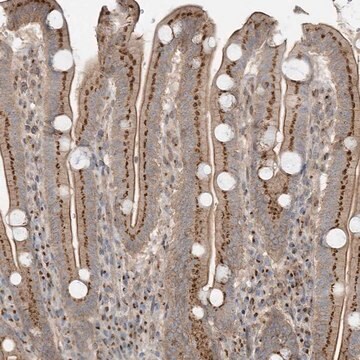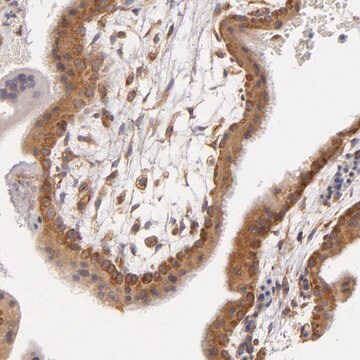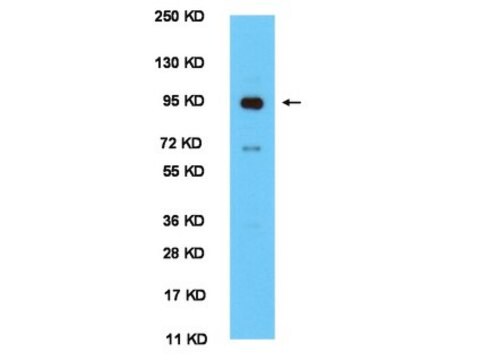MABF3068
Anti-CD163 Antibody, clone MAC2-158
Sinônimo(s):
Scavenger receptor cysteine-rich type 1 protein M130;Hemoglobin scavenger receptor
About This Item
Produtos recomendados
fonte biológica
mouse
Nível de qualidade
conjugado
unconjugated
forma do anticorpo
purified antibody
tipo de produto de anticorpo
primary antibodies
clone
MAC2-158, monoclonal
peso molecular
calculated mol wt 125.45 kDa
purificado por
using protein G
reatividade de espécies
human
embalagem
antibody small pack of 100 μg
técnica(s)
flow cytometry: suitable
immunocytochemistry: suitable
immunohistochemistry (formalin-fixed, paraffin-embedded sections): suitable
immunoprecipitation (IP): suitable
western blot: suitable
Isotipo
IgG1κ
sequência de epítopo
N-terminal
nº de adesão de ID de proteína
nº de adesão UniProt
Condições de expedição
ambient
modificação pós-traducional do alvo
unmodified
Descrição geral
Especificidade
Imunogênio
Aplicação
Evaluated by Immunohistochemistry (Paraffin) in human thymus tissue sections.
Immunohistochemistry (Paraffin) Analysis: A 1:250 dilution of this antibody detected CD163 in human thymus tissue sections.
Tested Applications
Immunohistochemistry (Paraffin) Analysis: A 1:250 dilution from a representative lot detected CD163 in human liver tissue sections.
Flow Cytometry Analysis: A representative lot detected CD163 in Flow Cytometry applications Maniecki, M.B., et al. (2011). Immunobiology. 216(8): 882-90; Krijgsman, D., et al. (2020). Int J Mol Sci. 21(16): 5925).
Immunocytochemistry Analysis: A representative lot detected CD163 in Immunocytochemistry applications (Maniecki, M.B., et al. (2011). Immunobiology. 216(8): 882-90).
Flow Cytometry Analysis: A representative lot detected CD163 in human peripheral blood mononuclear cells (PBMC) (Data courtesy of Jane Collins, Research Laboratory Manager of Dr. Paul M. Guyre s Lab, Department of Microbiology and Immunology, Geisel School of Medicine, Dartmouth College, NH, USA).
Western Blotting Analysis: A representative lot detected CD163 in Western Blotting applications (Maniecki, M.B., et al. (2011). Immunobiology. 216(8): 882-90).
Immunoprecipitation Analysis: A representative lot immunoprecipitated CD163 in Immunoprecipitation applications (Morganelli, P.M., et al. (1988). J Immunol. 140(7): 2296-304).
Note: Actual optimal working dilutions must be determined by end user as specimens, and experimental conditions may vary with the end user
forma física
Armazenamento e estabilidade
Outras notas
Exoneração de responsabilidade
Não está encontrando o produto certo?
Experimente o nosso Ferramenta de seleção de produtos.
Código de classe de armazenamento
12 - Non Combustible Liquids
Classe de risco de água (WGK)
WGK 1
Certificados de análise (COA)
Busque Certificados de análise (COA) digitando o Número do Lote do produto. Os números de lote e remessa podem ser encontrados no rótulo de um produto após a palavra “Lot” ou “Batch”.
Já possui este produto?
Encontre a documentação dos produtos que você adquiriu recentemente na biblioteca de documentos.
Nossa equipe de cientistas tem experiência em todas as áreas de pesquisa, incluindo Life Sciences, ciência de materiais, síntese química, cromatografia, química analítica e muitas outras.
Entre em contato com a assistência técnica








